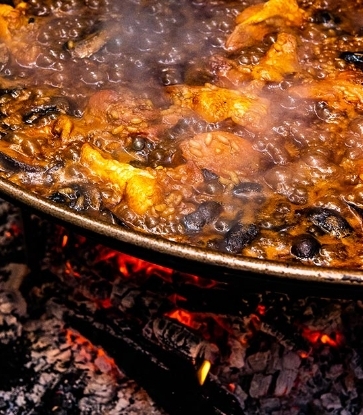
Recognising his bold approach to cooking, he was recently awarded the GastroMonth Circle of Excellence Awards for Innovative and Bold Chef.
It has always been my dream not to be tied down by a fixed menu and have to prepare the same thing every day. Rather I get a few portions of the best ingredients and play around with those—I don’t decide, nature decides. Then you leave it to me and every day I do my best depending on the ingredients available.
What are some challenges you face?
It can be quite challenging when people have dietary restrictions. Because to chefs, dietary restrictions are very serious business. If you are allergic to something, I assume that I can kill you by giving you that ingredient, or at least harm you. It’s not really a problem for me to adjust a dish around someone’s dietary restrictions, the problem comes when there is a table of ten and one person is allergic to seafood, one needs a gluten-free meal, another ‘I don’t eat meat’. I once had a table of six—and I remember it so clearly—one don’t eat seafood, one don’t eat meat, one don’t like cold food, one gluten-free and one was allergic to vinegar. When there’s a table of six and five have special requirements, that’s tricky. Doable but tricky.
What’s the strangest thing to have happened in your restaurant?
Do you know this group, Big Bang? The Korean group? They were here. And after that, I had this solo diner come in and ask: “Was Big Bang here?” I said: “Yes ma'am” and she said “can I sit at the exact same place that G-Dragon was sitting?” “Yes you can” She sat down where G Dragon was and asked “Can I eat exactly what he ate?” “Can be done!” So she sat there where G dragon sat, ate what G dragon ate and took pictures of herself, paid the bill and left. I thought it was crazy.

All my career I’ve been doing gastronomie, fine dining restaurants. I think [degustation menus] are still the best way to showcase a dish. When I serve you a dish, it is whole—there is a balance to it, a piece of meat, some garnish, some sauce. But with a la carte, people like to share. If you split a dish into three to share, you cannot control how much everybody tastes of the dish, so the appreciation is different. Rather if I give you something that is only for you, the balance is there.

Sake pairing is something quite new still in Singapore but it’s something I’ve tried in Japan. I went to Sendai and visited Katsuyama Sake. Jihei Isawa has a pizza restaurant inside his brewery—when you go inside, it is very serious and traditional with samurai sword and then suddenly you see a pizzaiolo! He brought me through the experience of pairing Italian food with champagne, beer, white wine, red wine, and then sake and it blew my mind. Sake goes very well with food, the basic difference is acidity. Beers and wines have high acidity whereas sake is low in acidity but high in glucose. When you eat a piece of beef, the acidity from a sip of red wine clears your palate and prepares you for the next bite. Sake interacts in a different way with food, it enhances the food.


















